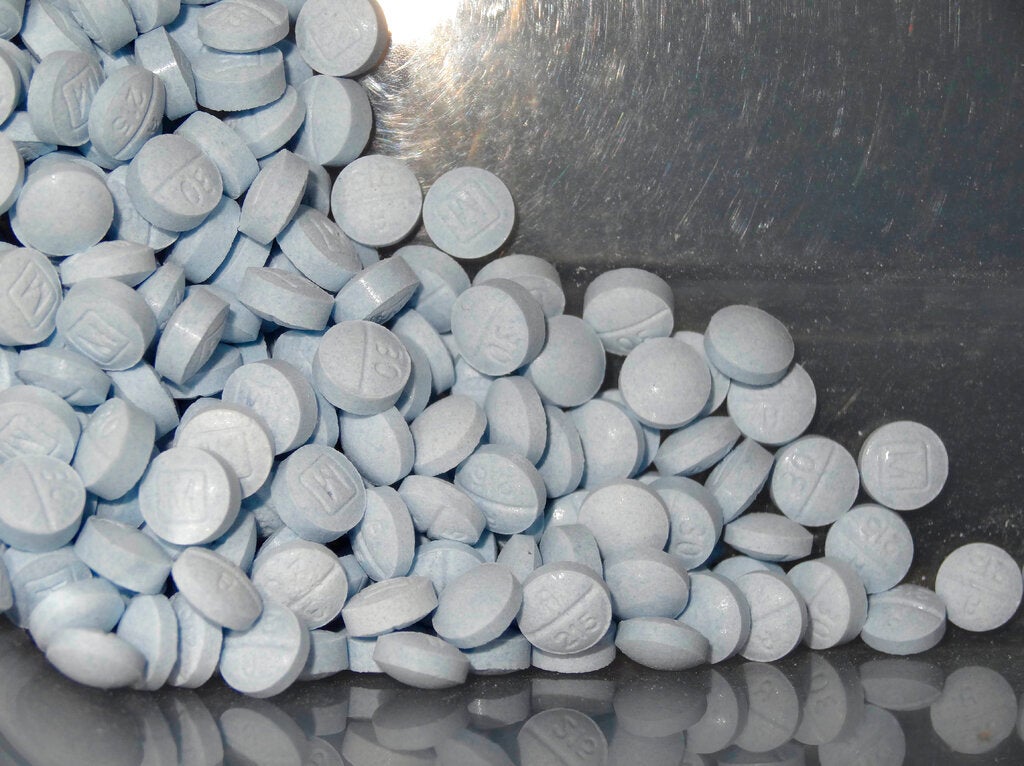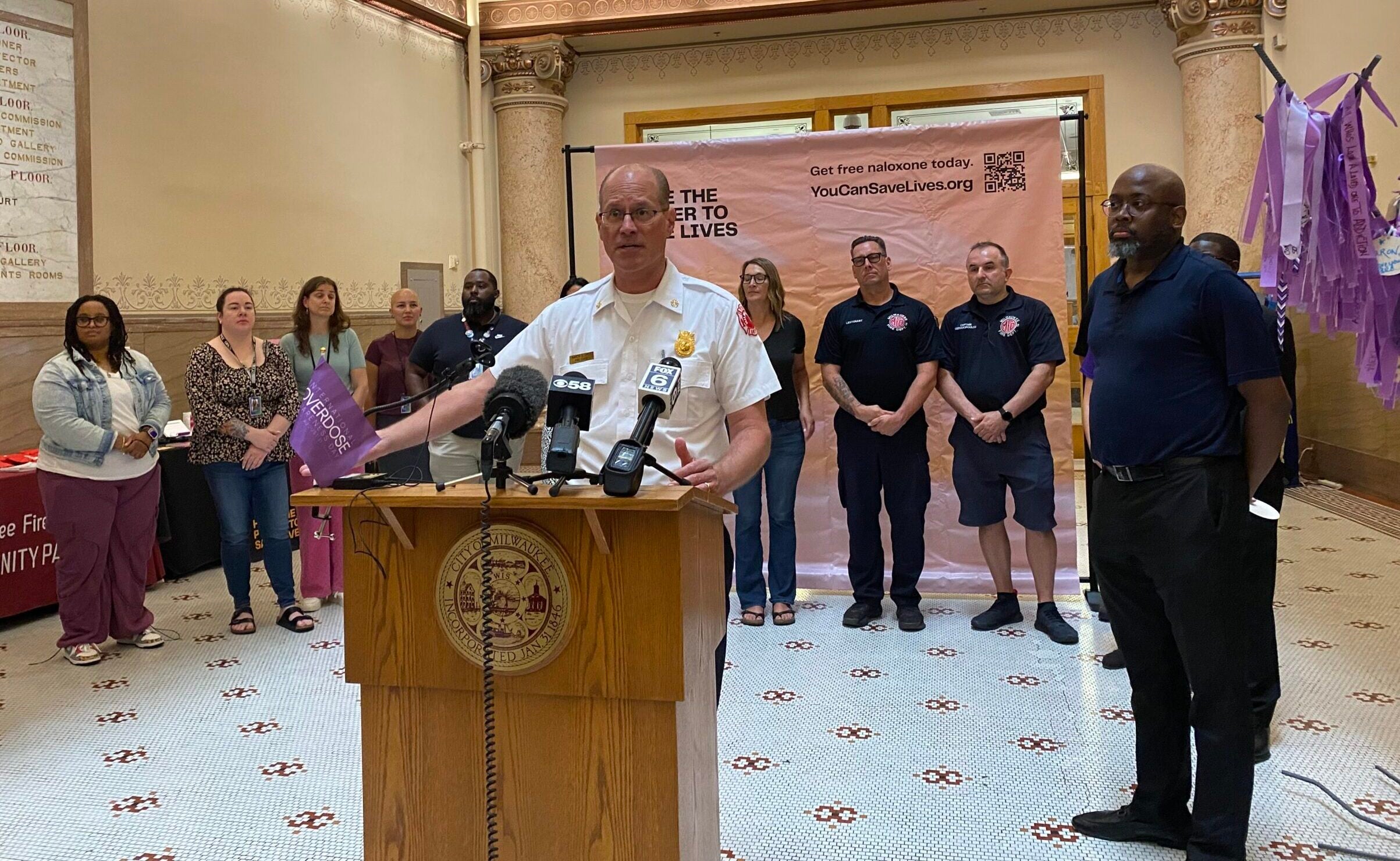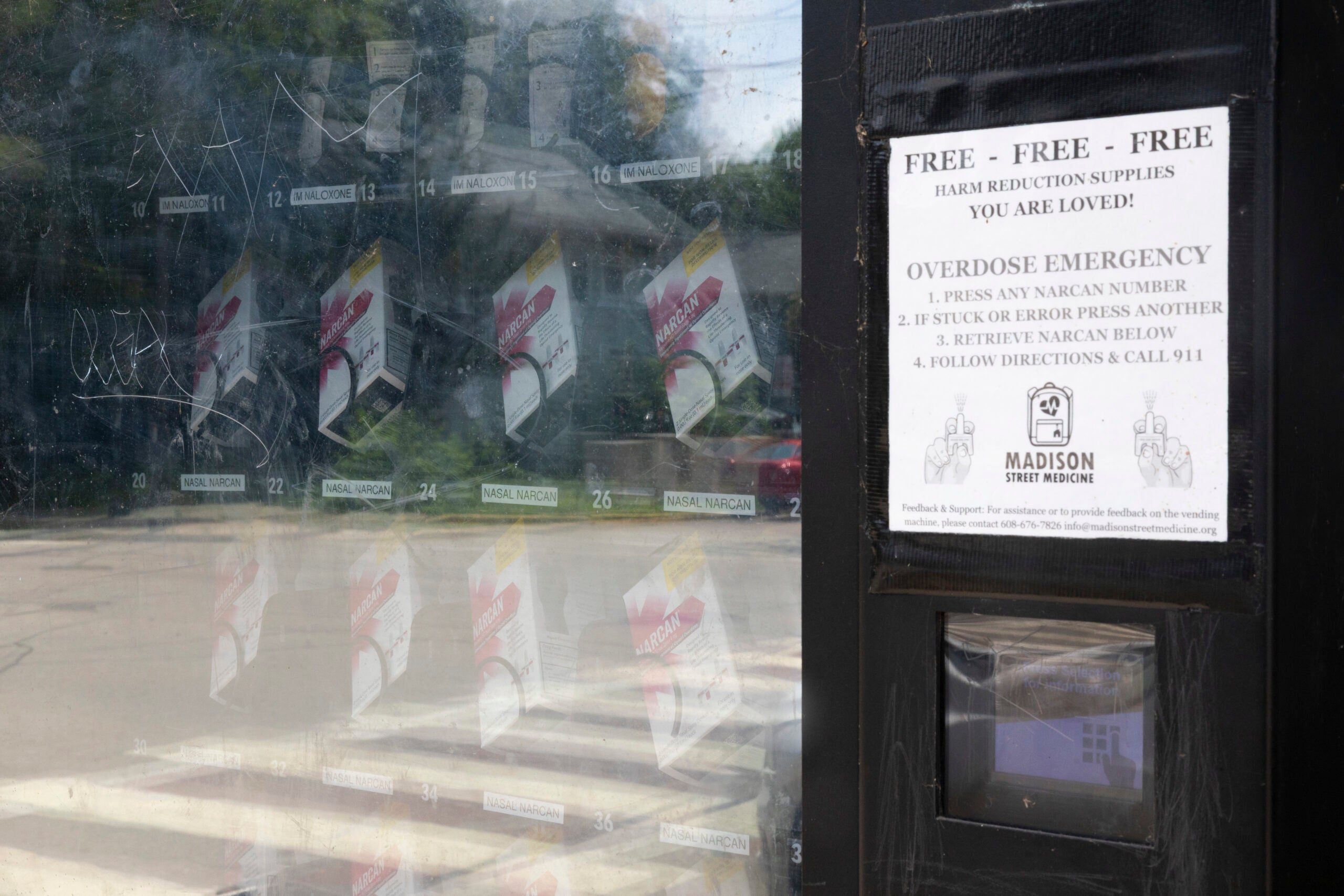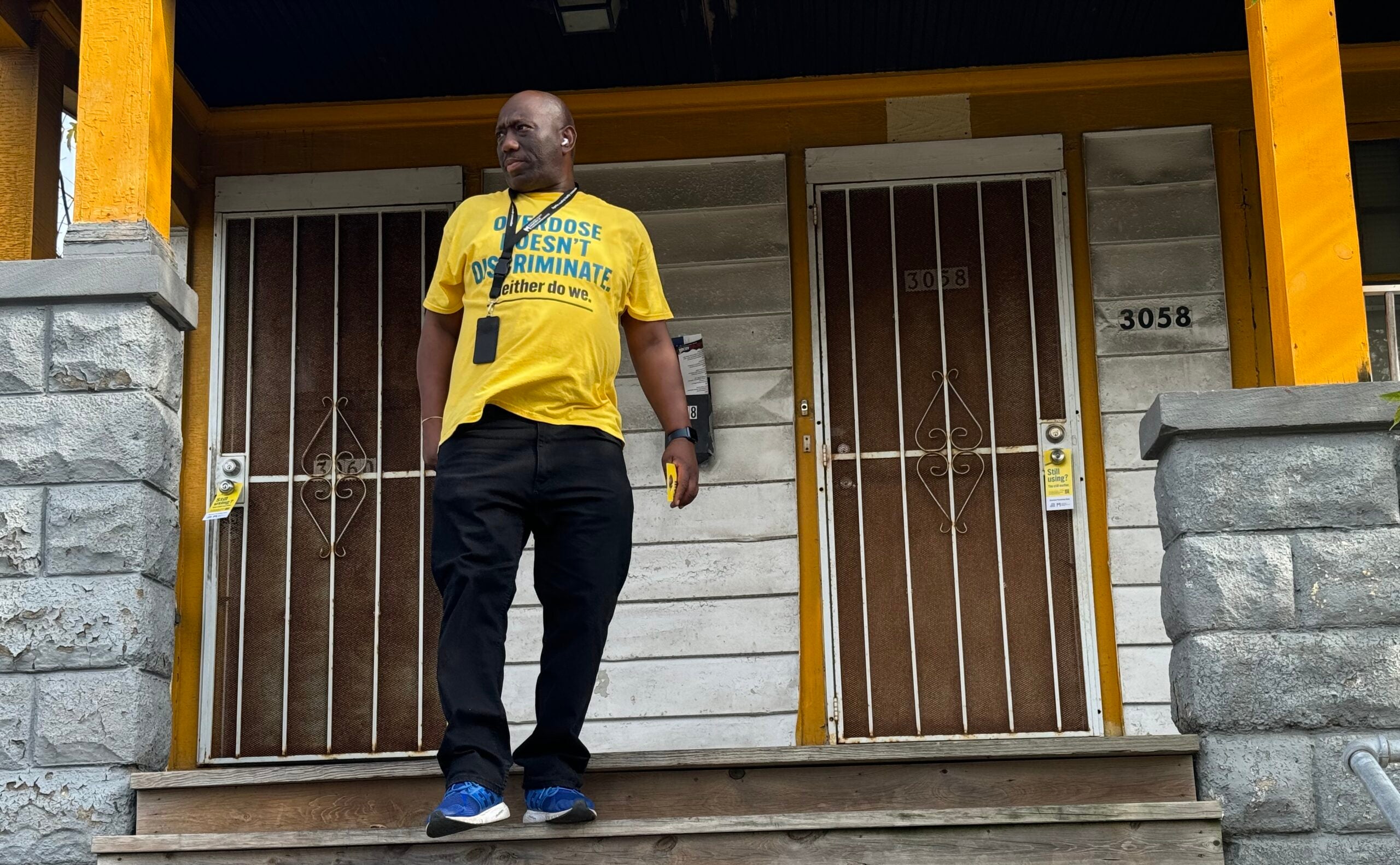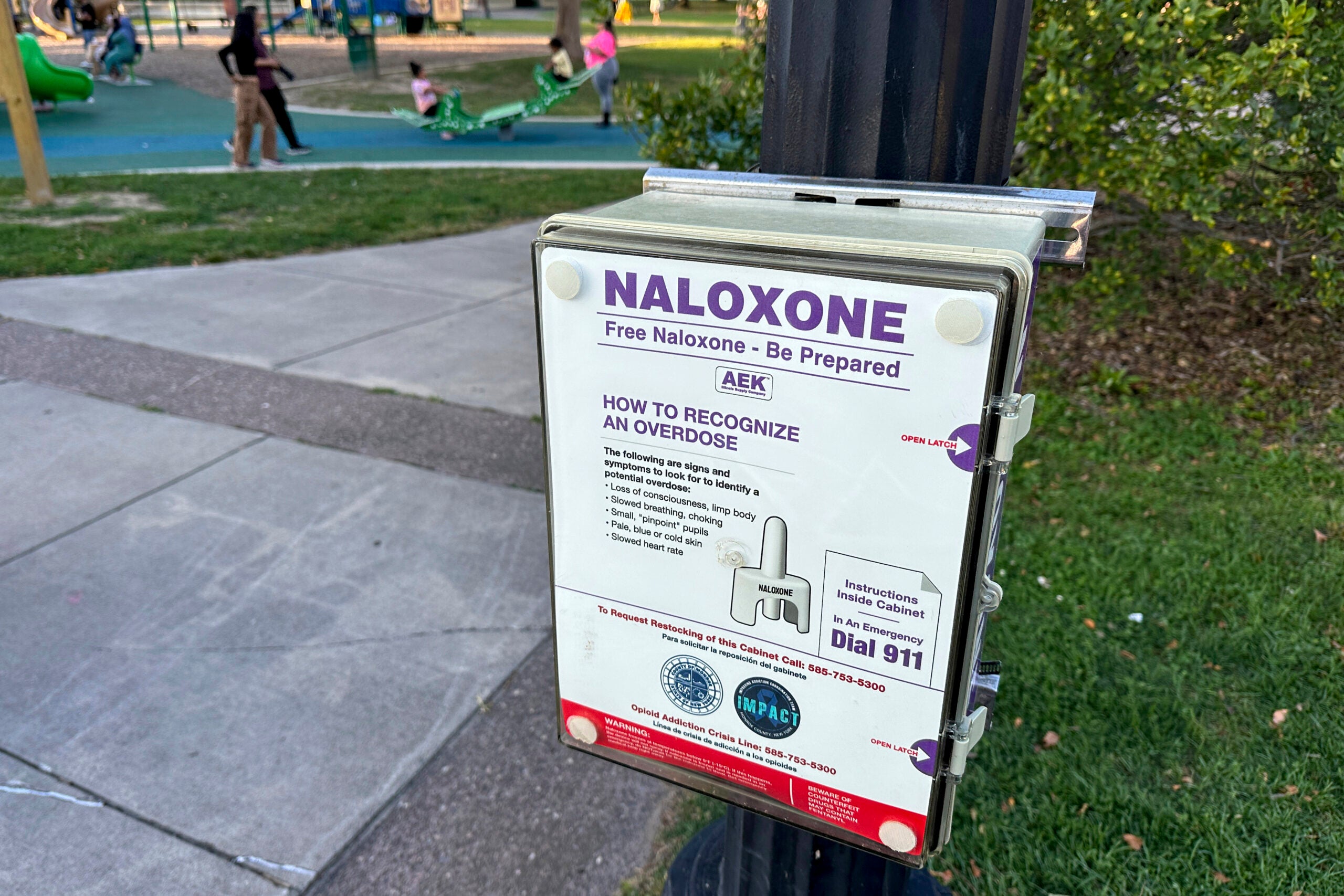More than 4,000 people could access treatment for opioid addiction through $8 million in grants awarded by state health officials as opioid-related deaths have climbed to record highs.
The Wisconsin Department of Health Services announced the grants Tuesday for 22 counties and three tribal nations. The money comes from $34 million awarded to the state under a federal grant program to address the opioid epidemic in Wisconsin.
Since 2020, Paul Krupski, the agency’s director of opioid initiatives, said they’ve been able to use the funds to support treatment for opioids like heroin and fentanyl in addition to drugs like cocaine and methamphetamine.
News with a little more humanity
WPR’s “Wisconsin Today” newsletter keeps you connected to the state you love without feeling overwhelmed. No paywall. No agenda. No corporate filter.
“This will support the evidence-based approach to medication-assisted treatment for opioid use disorder, and that includes all three of the Food and Drug Administration-approved medications — methadone, buprenorphine and naltrexone,” Krupski said.
The funding will also support behavioral therapy and other recovery supports for treating opioid use disorder. For people addicted to meth or cocaine, the money will be used to connect people to cognitive behavioral therapy and a treatment approach known as the Matrix Model. That model includes providing therapy within a structured environment and other supports to help individuals recover from drug addiction.
Substance abuse skyrocketed as a way for people to cope with stress, anxiety and other issues stemming from the COVID-19 pandemic, Krupski said. He said the pandemic along with the increased presence of fentanyl in the drug supply has played a role in record overdose deaths. State health officials reported a record 1,427 opioid overdose deaths in 2021, according to the most recent data available.
Data on overdose deaths for last year won’t be finalized until this fall. However, Krupski noted national data indicates the number of overdose deaths may be lower than initial predictions, providing hope they may have peaked in 2021.
That may not be true everywhere in Wisconsin, especially in the state’s largest county. Earlier this year, the Milwaukee County Medical Examiner’s Office estimated the county saw around 680 drug overdose deaths last year. So far, the county has recorded 627 drug deaths with 50 cases still pending as of Wednesday. If that estimate rings true, last year would mark the city’s fourth year in a row that the county set a new record for drug deaths.
Communities across the state have grappled with overdose deaths, including Superior in Douglas County. The Superior Police Department said the city saw 69 overdoses last year, which increased 21 percent from 2021. Superior Community Policing Officer Brad Jago said that includes individuals who died and overdoses that were reversed with the opioid reversal medication Narcan.
This month, Superior police arrested and charged two women with reckless homicide for allegedly supplying fentanyl to a 45-year-old man who died of an overdose last fall.
“(Fentanyl) continues to be a contributing factor, if not the direct cause, in many of our overdoses here in the city of Superior,” Jago said.
Douglas County Chief Medical Examiner Sheila Keup said the number of overdose deaths in the county grew from 6 in 2019 to 16 last year. She said the majority of those deaths involved fentanyl.
Jago said some of those overdose deaths appear to be accidental because individuals didn’t know the drugs they were consuming contained the fentanyl. He said the department is also encountering more counterfeit prescription pain pills that contain the drug. The Superior Police Department has been offering free in-patient and out-patient treatment through its Pathways to Hope program to help those struggling with addiction.
Krupski said access to treatment is critical: “If we don’t have better access and better availability of treatment for individuals that need it, they’re not going to be as willing to seek it out.”
The state is using $16.9 million available each year through a federal grant program for prevention, treatment and recovery efforts that include the distribution of Narcan. The federal omnibus spending bill also includes $1.6 billion in opioid response grants to states and tribes nationwide. More than 17,000 people have been connected to services in Wisconsin since 2017 as a result of the grant funds.
Wisconsin is also receiving around $400 million through annual installments under a settlement with major pharmaceutical firms. Lawmakers on the state’s Republican-controlled finance committee have objected to plans submitted by Gov. Tony Evers’ administration for spending those funds.
The Department of Health Services proposed spending half of $8 million in settlement funds for increasing the availability of Narcan and fentanyl test strips. The agency also planned to spend $3 million on expanding treatment and recovery services, as well as invest $1 million in substance use prevention programs at schools.
Wisconsin Public Radio, © Copyright 2026, Board of Regents of the University of Wisconsin System and Wisconsin Educational Communications Board.
